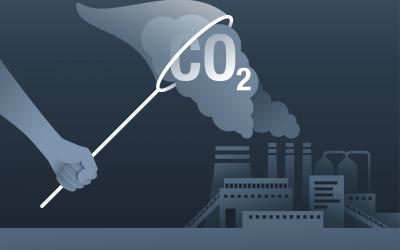Carbon Capture, Utilization and Storage (CCUS) is a set of technologies that capture carbon dioxide (CO2) emissions at the source, this will prevent the emissions from entering the atmosphere. The CO2 emissions are then transported away and either stored deep underground or turned into other useful products.
CCUS is instrumental in enabling the circular carbon economy, a framework in which the emission of carbon is addressed through a circular cycle. This circular cycle is what the earth has been doing for billions of years, and by emulating this approach we may help restore the balance of carbon and achieve the greatest impact in reducing global emissions.
What carbon capture technologies are available?
- Capture is the process of capturing CO2 from exhaust or removing directly from the atmosphere.
- Direct Air Capture is the process of capturing CO2 directly from the atmosphere (rather than at source) and remove CO2 to be sequestered or utilized.
- Sequestration is the process of depositing the captured CO2 in geological formations under the ocean floor.
- Utilization is the direct use of captured CO2 (for example in cement) or the conversion of captured CO2 and other gases into useful industrial products, such as chemicals or fuels.
- Mobile Carbon Capture technology can capture CO2 from mobile sources and store it on board, ready to be taken away for sequestration or utilization.
- Bio Energy Carbon Capture and Storage (BECCS) uses CCS technology to extract and store CO2 from biomass, itself a renewable energy source.
- Nature can act as a natural carbon sink, such as mangrove trees which sequester carbon far more effectively (up to 100 times faster) and more permanently than terrestrial forests.

